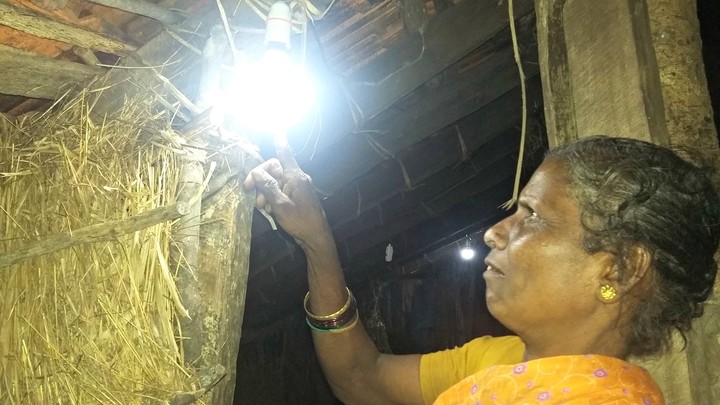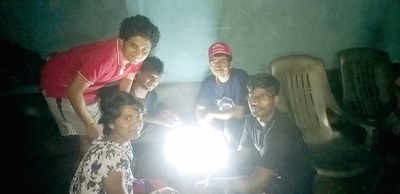In Joida, students do what govt didn’t in 69 yrs

The first time the residents of Ghatkunang and Khangav villages saw a bulb light up their homes, they were so moved, they prayed. Thanks to the efforts of four Bengaluru students, these two remote villages of Joida taluk in Uttara Kannada district will no longer be in darkness.
What started out as a project by Sunny Arokia Swamy, Balachandra M Hegde, Kumara Swamy, and Kotresh Veerapura, all students of MS Ramaiah Institute of Technology, has become a blessing for the 18 households that now have solar-powered lighting.
The idea came to the students while working on a project for a competition. The four wanted to put their engineering skills to good use. They had read about villages in the state that had yet to be electrified and decided to do something about it. The 23-year-olds then approached their head of department for help. “We first decided to survey the villages,” Kotresh told Mirror. “We wanted to install our systems where it was really required.”
In the course of their research, they came across several villages near Joida taluk that had not been electrified ever. They set out on a recce, and soon realised how ‘remote’ these were. These clusters of houses, located in the Western Ghats, didn’t even have proper roads leading up to them. It took them a while to reach there, following a trail, a mud road, to these villages.
To get a better understanding of the life the residents lived, the students decided to stay.
Sunny said: “We started our journey to the dense forest region on February 5 this year. We had planned to survey the villages for at least two days. We witnessed the life there and interacted with the people. It was unbelievable that a service we take for granted has never found its way into this dense forest. And this was just two hours away from Goa.”
The inhabitants of the village are mainly paddy farmers. When they fall short of money, they go to Goa and work as daily wage labourers. “We took down the details required for designing the system and came back to Bengaluru. We spoke to our department head, Premila Manohar, about the idea. She readily accepted to take up the project. The whole project was funded by our college,” said Kumara.

As there was no infrastructure available for drawing electricity lines, it had to be completely solar-powered. With help from other students, they started working on a system that would suit the climatic conditions of the village. The team met every Saturday and Sunday in the college lab to work on the project. The prototype was tested for durability and reliability in a private lab.
Once it was approved, 20 more such systems were made. Each system cost them Rs. 20,000.
The systems were installed last month in the houses. Each consisted of a 100Wp solar panel, 65Ah battery, 1 tubelight and 3 bulbs. In the absence of electricity, the installation itself was quite the task. They had to use manual drills and work under the light of a torch. The high-power solar panels can light four sources of light for up to 48 hours.
The residents were also taught to maintain the system. Local electricians were also trained to tackle any problems. When the first bulb was lit in early April, the smile on their faces was unforgettable, said Balachandra. “Their first reaction was to pray. That moment made us realise how much their lives had changed,” he said. Propelled by their success, the students now want to reach out to more such villages, “because there was nothing happier than that smile”.